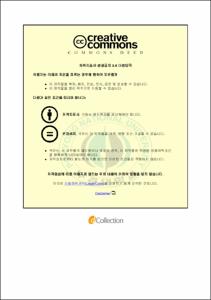Sintering Behavior of Powder Metallurgy Aluminum Metal Matrix Composites
- Abstract
- Powder metallurgy (P/M) is a near-net-shape manufacturing process in which metallic powders are pressed and sintered into high-tolerance components. Aluminum-Silicon P/M alloys have been of particular interest as these materials offer the advantage of high-wear resistance, high strength, good temperature resistance, and a low coefficient of thermal expansion. More recently, a novel hypereutectic aluminum-silicon alloy referred to as “Alumix-231” has emerged. The first known Al-Si commercial press and sinter P/M system, this alloy is manufactured by Ecka Granules and has a nominal composition of Al-14Si-2.5Cu-0.5Mg.
Aluminum metal matrix composites with SiC as a reinforcement particle has been significantly improved in terms of mechanical properties of aluminum alloys. Si and SiC have important role to improve wear properties of aluminum alloys. At this research, we optimize sintering behavior of aluminum metal matrix composites with different chemical compositions.
The powder was compressed by using dual action press machine with compaction pressure from 300-700 MPa. Green density increased with increasing compaction pressure. All samples were sintered in a tube furnace under a flowing nitrogen atmosphere. Sintering temperature is from 520-570oC for 30-120 minutes and 5-15oC/min heating rate. Before reach sintering temperature, compacted powder were dewaxed at 400oC for 20 minutes. Highest sintered properties (exp. Sintered density, hardness) was obtained by using 560oC sintering temperature for ~97% sintered density. And at optical microscopy also showed highest densification on this sample.
Chemical compositions at this research played an important role to improve sintering properties. Alumix 231 significantly improved sintering properties of aluminum metal matrix composites. Highest sintering density was obtained for over than 95% relative for these compositions.
T6 heat treatment was carried out to observe the effect of heat treatment to the alloy. The optimum heat treatment involved solutionizing the samples at 512oC for 50 minutes, followed by water quenching, and artificially aging the samples at 173oC for 24 hours and 10 hours for another powders. Rolling of sintered samples was also done to improve mechanical properties of these materials.
- Issued Date
- 2012
- Awarded Date
- 2012. 8
- Type
- Dissertation
- Publisher
- 부경대학교
- Affiliation
- 부경대학교 대학원
- Department
- 대학원 기계공학학ㆍ연협동과정
- Advisor
- 남기우
- Table Of Contents
- 1. Introduction 1
1.1. Powder Metallurgy 1
1.2. Aluminum Powder 3
1.3. Aluminum Metal Matrix Composites 6
1.3.1. Fabrication of Aluminum MMC 9
1.3.2. Types of Aluminum MMC 11
1.4. Powder Metallurgy Processing 21
1.5. Heat Treatment of Aluminum Alloys 37
1.5.1. Solution Treatment 39
1.5.2. Quenching 40
1.5.3. Aging 41
2. Experimental Procedure 45
2.1. Experimental Procedure of Alumix-231 46
2.2. Experimental Procedure of Al-Si-SiC Alloy 49
2.3. Experimental Procedure of Al-Si-Fe-SiC Alloy 51
3. Results and Discussion 54
3.1. Alumix-231 54
3.1.1. Characterization of Powder 54
3.1.2. Effect of Compaction Pressure on Green Density 57
3.1.3. Sintering Response 58
3.1.4. Heat Treatment Response 68
3.2. Al-Si-SiC Alloy 76
3.2.1. Characterization of Powder 78
3.2.2. Effect of Compaction Pressure on Green Density 82
3.2.3. Sintering Response 87
3.2.4. Heat Treatment Response 89
3.2.5. Effect of Lubricants 91
3.3. Al-Si-Fe-SiC Alloy 104
3.3.1. Characterization of Powder 104
3.3.2. Effect of Compaction Pressure on Green Density 104
3.3.3. Sintering Response 105
3.3.4. Heat Treatment Response 110
4. Summary 115
5. References 118
- Degree
- Doctor
- Appears in Collections:
- 대학원 > 기계공학학연협동과정
- Files in This Item:
-
-
Download
 Sintering Behavior of Powder Metallurgy Aluminum Metal Matrix Composites.pdf
기타 데이터 / 6.26 MB / Adobe PDF
Sintering Behavior of Powder Metallurgy Aluminum Metal Matrix Composites.pdf
기타 데이터 / 6.26 MB / Adobe PDF
-
Items in Repository are protected by copyright, with all rights reserved, unless otherwise indicated.